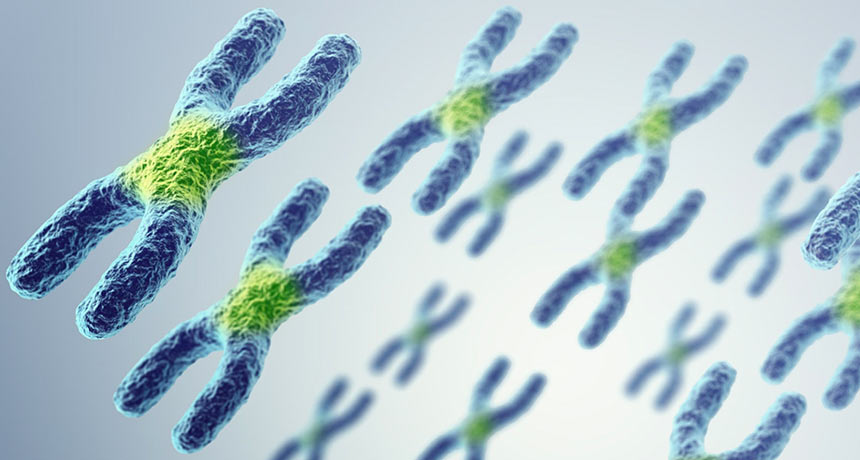
CORE STRENGTH Researchers have decoded the genetic composition of important structures called centromeres (colored green in this illustration) in fruit flies’ chromosomes. Centromeres ensure that chromosomes are properly distributed to dividing cells.
Rost-9D/iStock / Getty Images Plus